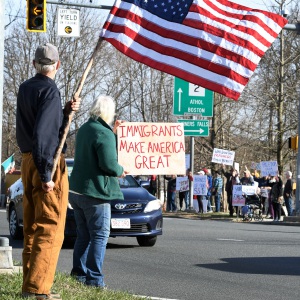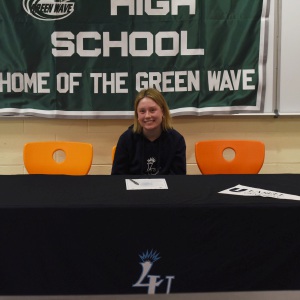Survey looks to gauge broadband deficiencies in Montague

AP FILE PHOTO/TOBY TALBOT AP FILE PHOTO/TOBY TALBOT
| Published: 07-04-2024 9:31 AM |
MONTAGUE — As part of a national effort to assess the accuracy of the Federal Communications Commission’s (FCC) map of broadband access, local residents are being encouraged to provide insight through a survey between June 20 and July 20.
According to an announcement distributed by Montague Town Planner Maureen Pollock, Montague will participate in the Broadband Equity Access and Deployment (BEAD) Challenge, a census-style data collection program to see where broadband is accessible.
“Montague residents are strongly encouraged to conduct multiple speed tests at different times of day through a special portal (howsyourinternet.org) to make sure FCC internet maps are correct and accurately mark unserved and underserved locations,” Pollock’s announcement explains.
The information collected through the BEAD Challenge will be used by the Massachusetts Broadband Institute (MBI) to determine where extra funding needs to go to increase broadband access.
The BEAD Program, under the National Telecommunications and Information Administration (NTIA), gives a combined $42.45 billion to all 50 states to expand high-speed internet infrastructure, with Massachusetts receiving $147 million under the program. This program was developed as part of President Joe Biden’s 2021 Bipartisan Infrastructure Law allocating $454 billion for projects across the United States.
The MBI website provides definitions of broadband service levels, stating “BEAD defines reliable broadband service as a connection at or above 100 [megabits per second] downstream and 20 mbps upstream. Accordingly, service below this standard is considered unserved (below 25/3 mbps) or underserved (above 25/3 mbps but below 100/20 mbps).”
Current data from the MBI map shows that 97.76% of 3,163 locations in Montague are considered served, 1.90% are considered unserved and 0.35% as underserved.
Pollock’s announcement explains that there is a new benchmark for what is considered broadband internet by the FCC, but feedback from the town reveals the data isn’t accurate to what residents are experiencing from their connectivity.
Article continues after...
Yesterday's Most Read Articles
 Real Estate Transactions: April 11, 2025
Real Estate Transactions: April 11, 2025
 Mohawk Trail Regional School District plans trainings following staff misconduct allegations
Mohawk Trail Regional School District plans trainings following staff misconduct allegations
 Track roundup: Mohawk Trail opens season with sweep over Franklin Tech/Turners Falls (PHOTOS)
Track roundup: Mohawk Trail opens season with sweep over Franklin Tech/Turners Falls (PHOTOS)
 Attendance growing at weekly Gill standouts protesting Trump administration
Attendance growing at weekly Gill standouts protesting Trump administration
 Pioneer's Riley Thayer commits to play field hockey at Lasell University
Pioneer's Riley Thayer commits to play field hockey at Lasell University
 Northfield’s Wild Geese Decluttering helps clients achieve comfort through organization
Northfield’s Wild Geese Decluttering helps clients achieve comfort through organization
“While the FCC’s National Broadband Map indicates 100% of Montague households are ‘served,’ meaning they can connect to and utilize internet at speeds of at least 100/20 mbps … we can infer that this is not accurate based on community meetings, focus groups, feedback from residents and speed test data,” the announcement reads.
Ted Harvey, senior economic development planner with the Franklin Regional Council of Governments, explained the rural nature of some parts of the county make it difficult to fully connect people to the internet.
Despite some difficulty, he said the underserved parts of Franklin County have made significant strides in internet infrastructure.
“Over the past 10 to 20 years, Franklin County and the rural communities out here have done a pretty good job of getting networks up and running,” Harvey said, adding that when compared to other rural regions of the United States, Franklin County is in better connectivity standing overall.
Harvey said this process of challenging existing data to paint a more accurate pictured of connectivity will allow funding provided by the BEAD Program to improve internet infrastructure where deficits are found.
“The more people that do [the challenge], the more accurate the data will be,” Harvey said.
According to MBI’s map, the entirety of Franklin County has 95.32% broadband coverage at 100/20 megabits per second, which is slightly less than Hampden County at 99.1% served and Hampshire County at 98.51% served.
Michael DeChiara, senior advisor of the Alliance for Digital Equity in Western Massachusetts, explained that the COVID-19 pandemic exposed many of the issues with connectivity on a larger scale. This lack of broadband access in rural areas had been addressed before through MBI’s fiber-optic cable network “MassBroadband 123” completed in 2014, but the remaining gaps in connection posed a problem as more aspects of life moved online.
“We knew there were troubles with connectivity going into the pandemic, but the pandemic exposed how internet access is important as a lifeline,” DeChiara said. The lack of internet meant people struggled to connect to social media or other forms of outside communication, contributing to isolation.
DeChiara characterized internet access as being “more than just an iPhone,” especially for those who require other devices for education or socialization. The BEAD Challenge is an opportunity for those with broadband access at or above 100/20 megabits per second to affirm their access, but also to emphasize where connection is missing for future funding and infrastructure.
At this time, the challenge under the BEAD Program is geared toward better understanding accessibility rather than affordability, a limitation DeChiara pointed out. Many residents are connected to the internet, but are considered “underserved” by FCC standards even if the resident can only afford an internet connection package from their internet service provider below the 100/20 megabits per second benchmark for broadband. Affordability can be assessed once broadband gaps are better understood, DeChiara noted.
More information about the BEAD Challenge is available at tinyurl.com/r56c2n85.
Erin-Leigh Hoffman can be reached at ehoffman@recorder.com or 413-930-4231.






 Greenfield fire chief says city needs better cell service at ZBA hearing
Greenfield fire chief says city needs better cell service at ZBA hearing ‘Music just brings you together’: Frontier’s modern band to perform Thursday
‘Music just brings you together’: Frontier’s modern band to perform Thursday
